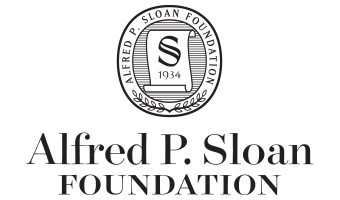Video as data & documentation
Rick O. Gilmore
2018-04-25 08:30:04



Agenda
Video as data
Video as documentation
Open video sharing with Databrary
Video analysis with Datavyu
The future of video sharing
Video as data
Adolph, K., Tamis-LeMonda, C. & Gilmore, R.O. (2017). PLAY Project: Pilot Data Collections. Databrary. Retrieved April 24, 2018 from https://nyu.databrary.org/volume/444.
Video…
Captures the complexities and nuances of behavior unlike any other measure
Can be readily repurposed to answer new questions
Contains faces & voices that make it hard(er) to share openly
Involves large file sizes that pose challenges to storage & streaming
Video as documentation
The PLAY Project Wiki: https://dev1.ed-projects.nyu.edu/wikis/docuwiki/doku.php/landing
Bahrick, L.E. (2017). Multisensory Attention Assessment Protocol (MAAP). Databrary. http://doi.org/10.17910/B7.326.
Naigles, L. (2014). Children use syntax to learn verb meanings. Databrary. http://doi.org/10.17910/B7J01M.
Cole, P.M., Gilmore, R.O., Scherf, K.S. & Perez-Edgar, K. (2016). The Proximal Emotional Environment Project (PEEP). Databrary. http://doi.org/10.17910/B7.248.
Video (& audio)…
Reveal critical procedural details that text-based descriptions omit
Capture the complexities and nuances of experimenter behavior unlike any other measure
Are a “gold-standard” in documenting procedures, displays, & materials
Can document annotation/code definitions, supplementing text-based descriptions
The PLAY Project Wiki: https://dev1.ed-projects.nyu.edu/wikis/docuwiki/doku.php/landing
The PLAY Project Wiki: https://dev1.ed-projects.nyu.edu/wikis/docuwiki/doku.php/landing
Adolph, K.E., Gilmore, R.O., & Kennedy, J.L. (2017, October). Video data and documentation will improve psychological science. Psychological Science Agenda.
If a picture paints a thousand words, then why can’t I paint you? The words will never show the you I’ve come to know.
“If”, Bread
Open video sharing
is…
A data library
Specialized for storing, sharing, browsing, and reusing video & audio recordings
Stores and shares…
Session (person + place + time) metadata + other types of data
Provides…
a policy framework for securely and ethically sharing identifiable data
Encourages (but does not require) …
Open (unrestricted) data sharing
No requirement for collaboration or co-authorship
Expectation of citation
Sharing identifiable data
Unaltered videos are most valuable for reuse
Videos are identifiable, so sharing requires participant permission
Restrict access: To researchers formally authorized by their institutions
Access agreement signed by researcher, institution
396 Institutions • 732 Investigators

Seek permission to share: Using standardized template language

https://www.databrary.org/resources/guide/investigators/release/release-levels.html
Store for research team/collaborator use; preservation
Share with other researchers (with participant permission)
How does it work?
Register for access
Databrary staff get in touch
Institution signs Databrary Access Agreement
Browsing
Log on
Search, filter, play
Most teaching & pre-research use cases do not require IRB approval
Sharing data
Upload as-as-you go (“self-curate”)
Add metadata, links to other resources
Give collaborators access
Share when you’re ready (paper goes to press, grant ends)
Secondary (re)use
Get IRB approval
Search, filter
Download
Code & use videos
Video analysis with Datavyu
The future of video sharing
Domains beyond developmental psychology

From data repository to analysis platform
Scriptable visualization

Visualize Datavyu timelines stored on Databrary
Machine-assisted audio & video analysis
Source: Ori Ossmy (NYU)
Source: LookIt, Kim Scott (MIT), & Rhodri Cusack (Trinity College Dublin)

Gilmore, R.O. & Adolph, K.E. (2017). Video can make behavioural science more reproducible. Nature Human Behaviour. doi:10.1038/s41562-017-0128
Let’s share video and discover more, faster
databrary.org, @databrary
datavyu.org, @datavyu
rogilmore@psu.edu
gilmore-lab.github.io
http://gilmore-lab.github.io/2018-04-25-introducing-databrary/
This talk was produced on 2018-04-25 08:30:04 in RStudio 1.1.383 using R Markdown and the reveal.JS framework. The code and materials used to generate the slides may be found at https://github.com/gilmore-lab/2018-04-25-introducing-databrary/. Information about the R Session that produced the slides is as follows:
## R version 3.4.4 (2018-03-15)
## Platform: x86_64-apple-darwin15.6.0 (64-bit)
## Running under: macOS Sierra 10.12.6
##
## Matrix products: default
## BLAS: /System/Library/Frameworks/Accelerate.framework/Versions/A/Frameworks/vecLib.framework/Versions/A/libBLAS.dylib
## LAPACK: /Library/Frameworks/R.framework/Versions/3.4/Resources/lib/libRlapack.dylib
##
## locale:
## [1] en_US.UTF-8/en_US.UTF-8/en_US.UTF-8/C/en_US.UTF-8/en_US.UTF-8
##
## attached base packages:
## [1] stats graphics grDevices utils datasets methods base
##
## other attached packages:
## [1] databraryapi_0.1.2.9004
##
## loaded via a namespace (and not attached):
## [1] Rcpp_0.12.16 revealjs_0.9 digest_0.6.15 rprojroot_1.3-2
## [5] R6_2.2.2 jsonlite_1.5 backports_1.1.2 magrittr_1.5
## [9] evaluate_0.10.1 httr_1.3.1 stringi_1.1.7 curl_3.2
## [13] rmarkdown_1.9 tools_3.4.4 stringr_1.3.0 yaml_2.1.18
## [17] compiler_3.4.4 htmltools_0.3.6 knitr_1.20

